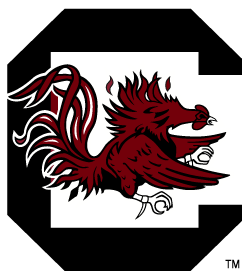May 5, 2003
USC Head Coach Dave Odom talked about the NCAA Rules Committee Changes this afternoon. Coach Odom is a member of the NCAA Rule Committee that proposed these changes last week. The release from the NCAA follows.
DAVE ODOM QUOTES:
“This is a change who’s time has come. It wasn’t difficult to make – it was three years of concentrated study and statistics – through exhibitions and exempt tournaments (Tournaments in Maui, Alaska, etc.) that chose to use it. What we learned from those studies and statistics was no there no appreciable difference between the current and future (proposed) line (less than 1 %) in shooting percentage for three-pointers. Furthermore, in the future, we had a feeling that it might discourage some poor shooters from shooting the 3 point shot in the future (it might then actually improve the 3pt. Percentage). Time will tell.
“We also wanted to bring the line in more with the international distance. The game of basketball is becoming increasingly more global and this gets the area more in line with our international partners so we are all playing the same game.
“We talked about different types of lanes to use: the NBA style, the trapezoid, etc. We invited USA Basketball, including CM Newton, to come and speak to the committee. We went to a court, marked off the new trapezoid lane and when we did that, we all saw how much more you do on the court. Many feel the lane is so congested and crowded and this will help open the lane. Spread the game further apart.
“There was some very good communication from the start of the meetings last week. Some very frank talk and discussions early on, for and against the rule change. But after seeing the court marked off, talking with USA Basketball, we felt this was a major change that will change the face of college basketball. It was voted in at 12-0.
“I personally felt some excitement on the way home (on the plane) because of the different things you can do now. I think it’s a good thing for college basketball. I encourage all the coaches, as soon as they get the ruling in the next couple days, to take it to the court, mark it off and do some walk throughs. I think they will find there will be a lot of exciting things that are now possible that weren’t there before.
“Someone like (USC’s forward) Carlos Powell will benefit because he will have to use less muscle and more quickness. He will be more effective.
“I would be very shocked if the Division I committee doesn’t approve it easily. I can’t speak for Division II or III (the committees meet in June).
“As far as it being a big adjustment for the players – I don’t think it will be as big of an adjustment as people think. I think the game needed a little juice and this is the juice it might be needing.”
Ncaa release:
NCAA MEN’S AND WOMEN’S BASKETBALL RULES COMMITTEES RECOMMEND CHANGES TO THREE-POINT LINE
INDIANAPOLIS—The NCAA Men’s Basketball Rules Committee voted unanimously to recommend to the three divisional governing bodies that the three-point line be moved back to the international distance, and that the international trapezoid free-throw/three-second lane be adopted, effective for the 2003-04 season.
The NCAA Women’s Basketball Rules Committee recommended that the international three-point line be used in the women’s game, effective 2003-04, and that the trapezoid lane be used as an experimental rule in selected games during the season.
If accepted, the recommendations, which were formed during meetings in Indianapolis April 29-May 1, would represent the first major changes in existing court-line dimensions since the 1956-57 season, when the lane was widened from 6 feet to 12 feet for the men’s game. The men’s game added the three-point line in 1986-87; the women’s game added the shot in 1987-88.
Art Hyland, chair of the men’s committee and men’s basketball officiating coordinator for the Big East Conference, said the men’s committee felt the recommendations were necessary to keep up with the modern game.
“The present dimensions have not kept pace with the physical size, prowess and skill of the players,” said Hyland, who has been the men’s committee chair for the past two years. “With more space created around the basket by both changes, there should be more opportunity for cutting through the lane and to the basket, and more dribble penetration by outside players. This is consistent with our emphasis on cleaning up rough play over the past few years.”
Lynn Hickey, women’s committee chair and director of athletics at the University of Texas at San Antonio, expressed the rationale for the women’s recommendation.
“Our student-athletes have demonstrated increasingly strong shooting behind the arc,” Hickey said. “Moving the line back 9 inches will be a small adjustment for today’s players.”
“We will experiment with the trapezoid next season to determine if it could also have a positive effect on the women’s game.”
Hyland said that the new dimensions would help to continue the emphasis on reducing offensive and defensive physical play in the post, which began three years ago when then-University of Kansas and current University of North Carolina, Chapel Hill, coach Roy Williams was chair of the men’s committee.
“Under the present lane configuration, an offensive player who successfully posts up at the block will most likely score or get fouled; therefore, most coaches defend the low post by fronting or three-quartering the offensive player. This has led to rough play by both the offensive and defensive post players.”
“The committee concluded that under this new configuration, it would not be as important to front the offensive post player since he is farther from the basket. In addition, the offensive low-post player would become a more skillful player rather than relying on brute strength.”
Hyland said that in forming the recommendations, committee members considered the experiments with these rules over the last three years, and also their extensive discussions with people involved with international basketball, such as NCAA senior vice-president and USA Basketball President Tom Jernstedt and C.M. Newton, past chair of both the men’s rules committee and the Division I Men’s Basketball Committee, who served as chief executive officer of the 2002 World Basketball Championship for men in Indianapolis. The committee also reviewed a letter co-written by Newton, former North Carolina coach Dean Smith and former Providence College coach and commissioner of the Big East, Dave Gavitt, asking the committee to adopt the changes, which helped further validate the opinions garnered from the experiments.
Under the recommendations, the three-point line would be moved back approximately 9 inches to a distance of 20 feet, 6 ? inches from the center of the basket to the outside edge of the line. The current distance is 19 feet, 9 inches. The exact metric distance for the international three-point line is 6.25 meters. The trapezoid lane widens the current lane at the end line by approximately 3 feet, 11 inches on either side. The new lane lines would run approximately from that point on each end line to the intersection of the current free-throw line and lane lines. At its widest point (at the end line) the trapezoid lane’s width is 6.0 meters or 19 feet, 8 ? inches. The current rectangular lane is 12 feet wide.
A court diagram can be viewed on the USA Basketball Web site at http://www.usabasketball.com/rules/court_diagram.pdf.* The only difference from the international lane under the recommendation would be that the dotted semicircle inside the lane would not be necessary since the college games do not conduct jump balls in that area.
The trapezoid was experimented with in the men’s certified games of the 2000-01 season. A rectangular lane 2 feet wider on each side than the current lane was experimented with in the 2001-02 season, and then during this past season, with the international three-point line added. The certified games are selected contests played before January 1 of each year. Originally, such games were known as “exempt” games. Tape or temporary paint, which was used in the certified-game experiments, would be permissible to be used as court markings until permanent lines could be added to all courts.
The men’s game would continue to allow four opponents of the free-thrower and two teammates of the free-thrower to line up on the lane during free throws as under the current rules. The international block and other lane spaces also would be used. The three-point line and the lane lines would no longer have to be of contrasting colors since they would not intersect.
The recommendations will be considered by the Division I Championships/Competition Cabinet (June 24-26, Bonita Springs, Florida), Division II Championships Committee (June 24-27, Savannah, Georgia) and Division III Championships Committee (June 23-25, Indianapolis).
A complete list of all other major rules changes, recommendations and points of emphasis for both the men’s and women’s games is attached. An asterisk denotes where the men’s and women’s rules differ.
In another action, the committees voted to add the following sporting behavior statement to the rules book: “The primary goal of the rules is to maximize the safety and enjoyment of the student-athlete. Sporting behavior is a key part of that goal. Sporting behavior should be a core value in behavior of players and bench personnel, crowd control by game management and the officials’ proper enforcement of the rules governing related actions.”












